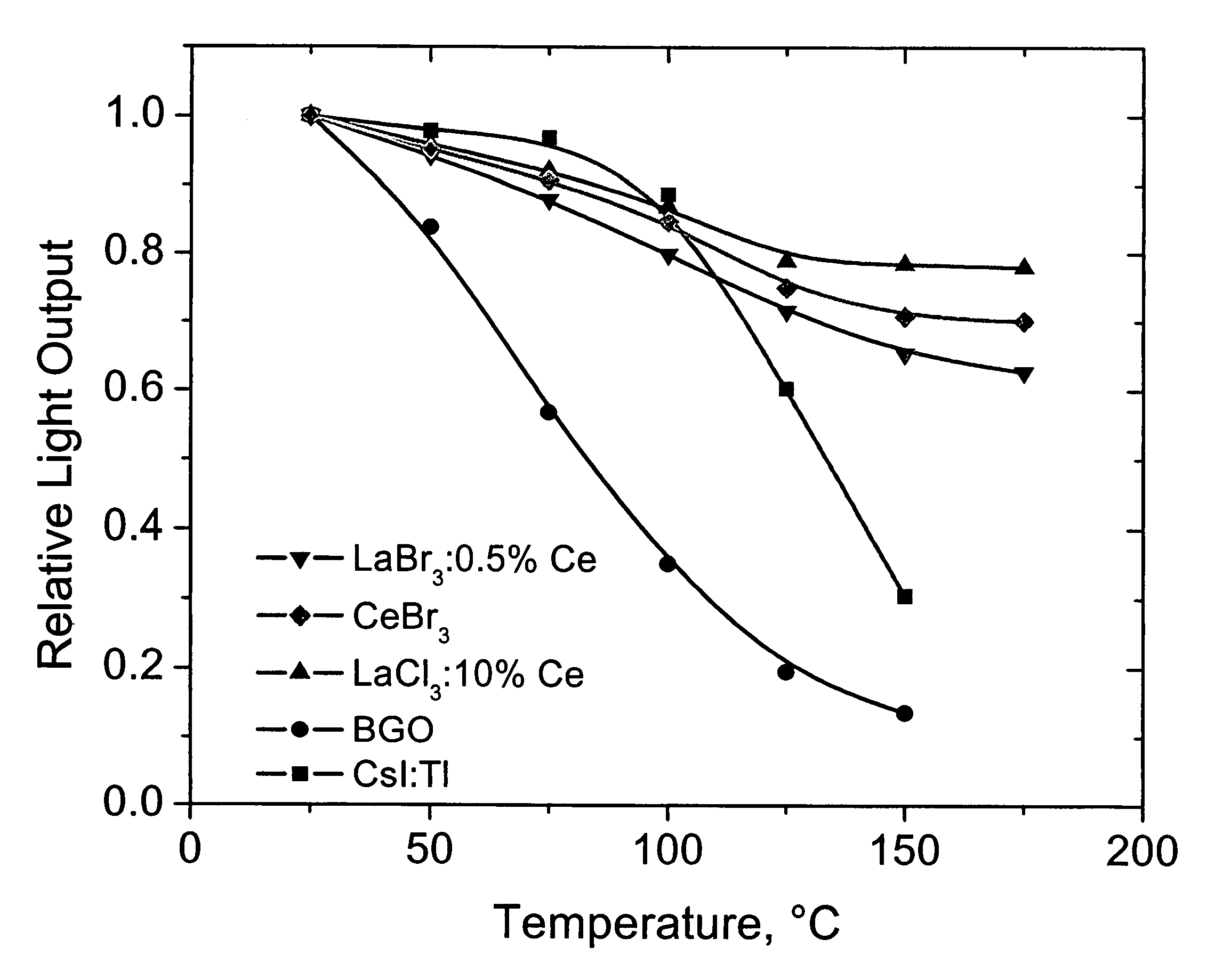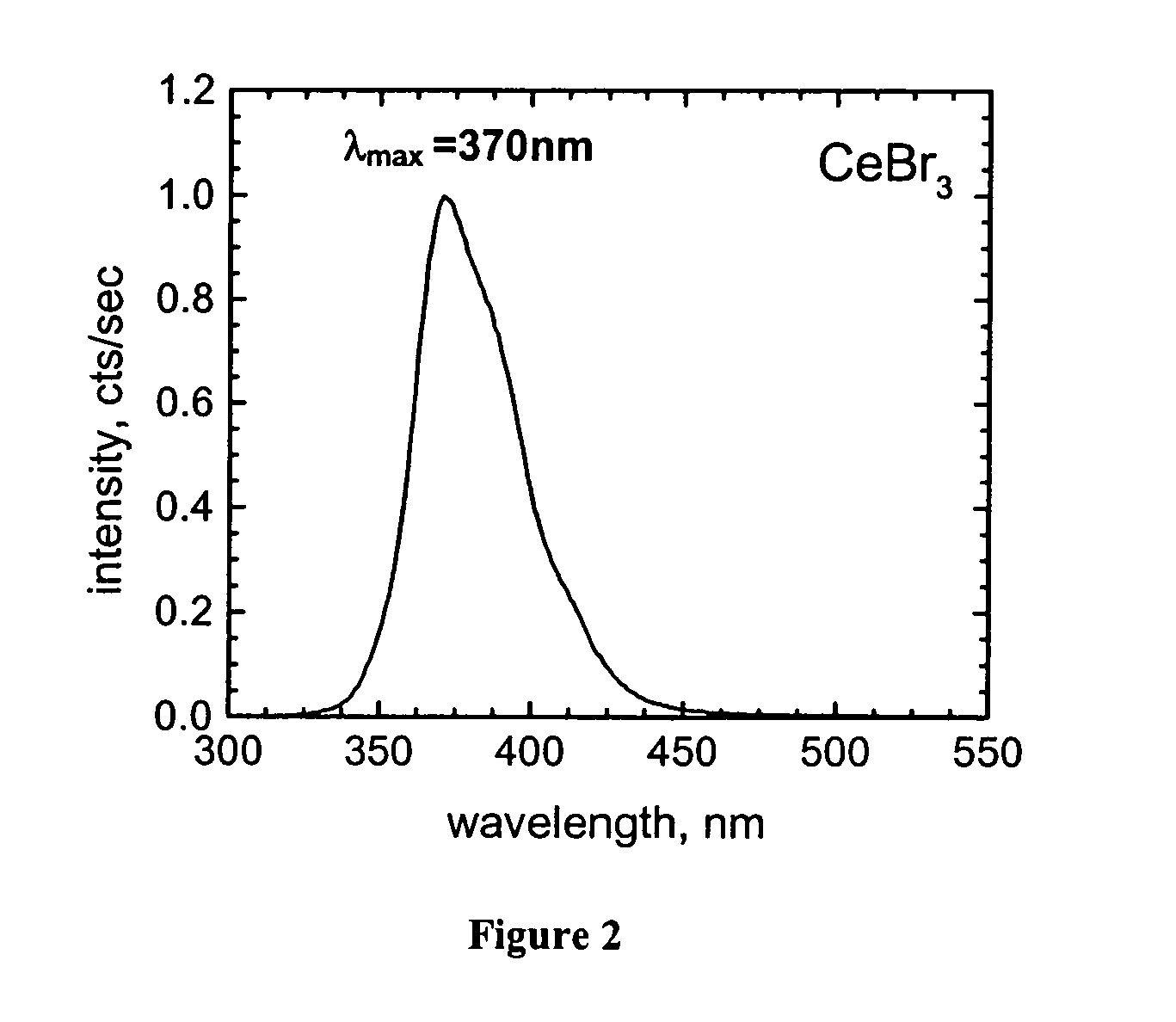CeBr3 scintillator
a scintillator and detector technology, applied in the field of scintillators, can solve the problems of a major limitation of the cost of the detector components, and achieve the effect of improving the accuracy and accuracy of the detector
- Summary
- Abstract
- Description
- Claims
- Application Information
AI Technical Summary
Benefits of technology
Problems solved by technology
Method used
Image
Examples
example 1
[0075]The present example provides a method for growing and provides characterization for CeBr3 scintillator crystals.
[0076]The following examples are offered by way of illustration, not by way of limitation.
Crystal Growth of CeBr3
[0077]CeBr3 has hexagonal crystal structure and its density is 5.2 g / cm3. The compound melts congruently at 722° C. and therefore its crystals can be grown using melt based methods such as Bridgman and Czochralski. This is fortunate because these melt-based processes are well suited for growth of large volume crystals (Brice, Crystal Growth Processes, Blackie Halsted Press (1986)). The Bridgman method has been used for growing CeBr3 crystals because this technique is easy to implement, and can provide good indication of the feasibility of producing high quality crystals of CeBr3 from the melt. Ultra-dry CeBr3 was used with 99.99% purity. A two zone Bridgman furnace was used with temperature in the hotter zone above the melting point CeBr3 (722° C.) and th...
example 2
[0090]The following example examines the characteristic of various scintillators at high temperature.
Experimental Setup for High Temperature Studies
[0091]A custom designed oven for elevating and maintaining the temperature of both photomultiplier tube (PMT) and scintillator was built. The device consisted of a high temperature PMT along with a thermocouple placed inside an aluminum shell that was heated with a resistive band. The assembly along with insulation was placed on a Teflon substrate. Since unpackaged crystals of LaBr3, LaCl3, and CeBr3 were used in the study, dry nitrogen was circulated around the PMT and the scintillator to prevent hydration of these moisture sensitive materials. Nitrogen, PMT and scintillator were heated up to 175° C. using a standard heating tape wrapped around the aluminum casing between the inner and outer walls. The temperature inside the chamber was controlled to ±1° C. by using a type K thermocouple connected to an Athena temperature controller (#1...
PUM
 Login to View More
Login to View More Abstract
Description
Claims
Application Information
 Login to View More
Login to View More - R&D
- Intellectual Property
- Life Sciences
- Materials
- Tech Scout
- Unparalleled Data Quality
- Higher Quality Content
- 60% Fewer Hallucinations
Browse by: Latest US Patents, China's latest patents, Technical Efficacy Thesaurus, Application Domain, Technology Topic, Popular Technical Reports.
© 2025 PatSnap. All rights reserved.Legal|Privacy policy|Modern Slavery Act Transparency Statement|Sitemap|About US| Contact US: help@patsnap.com



